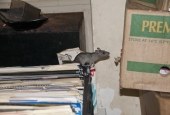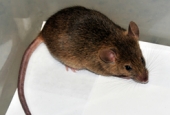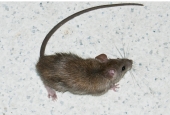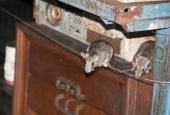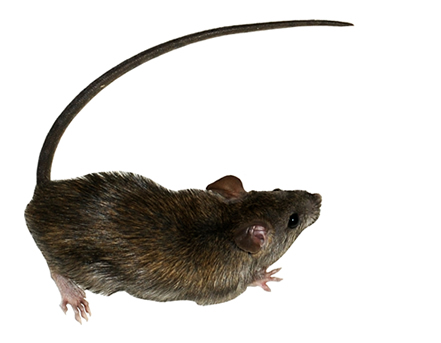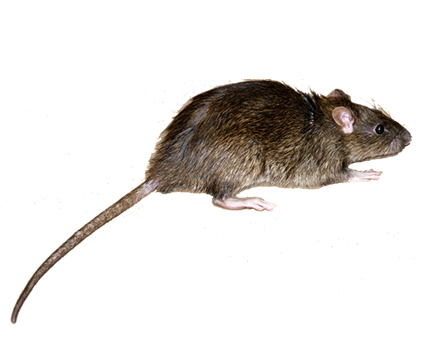Rats and mice share many similar body features. However, each has unique traits which can help you identify different species.
The Roof rat has a characteristic tail that is longer than its body length. It has a pointed snout and big ears. The fur color can vary from grey, brown to black. The Norway rat has a shorter tail, less than its body length. The snout is blunt and ears small. The body is more robust compared to the Roof rat and fur greyish in color. The House mouse is small (2.0–3.9 in) and can often be confused with a young rat. A young rat will have a larger head and disproportionately large hind feet.
The Roof rat is agile and a good climber, preferring dense vegetation for food, nesting and cover. Its diet is primarily fruits, nuts, seeds and snails. They build small nests in protected places like heavy vegetation, attics, wall voids, and insulation in crawl spaces. As with the other domestic rodents, they tend to be active in the evening, from dusk until dawn.
Norway rats tend to be more urban, found in older residential and commercial areas and often times associated with ageing sanitary sewer systems. Norway rats live and nest in burrows. They forage at night feeding on a wide variety of foods such as meats, garbage, pet food, grains and vegetation.
The House mouse can live outdoors (referred to as Field mice), but are equally as comfortable living indoors. If there is adequate food and shelter, House mouse populations can grow rapidly inside homes and businesses.
There are a number of diseases which can be transmitted by domestic rodents. Because rodents live so close to humans in the urban environment, they have historically been of great public health concern. Plague, leptospirosis, typhus, rat bite fever, and lymphocytic choriomeningitis are some of the more serious examples of diseases that domestic rats and mice are able to transmit. Salmonella and other bacterial diseases can be transmitted through their droppings and when they come into contact with contaminated surfaces. Most of these diseases, like plague and typhus, are transmitted through the bites of their ectoparasites (fleas and mites), which are capable of migrating off their rodent hosts and biting humans. However, in Alameda County, cases of human disease involving rodents and their ectoparasites are quite rare.
The most common complaint we receive regarding rodents is the economic and structural damage they can cause when they burrow under roads and walkways or take residence inside of a building. Their urine and fecal droppings can cause unpleasant odors and damage attic insulation and ceiling panels. Their habit of gnawing can damage electrical wiring, plastic and lead pipes, door frames, wall panels and appliances.
Removing rodent food sources and shelter through cultural and environmental modifications is essential in rodent prevention and control. Rodent-proofing structures is the only solution which provides long term control and ensures rodents will not be able to enter a building. Poor sanitation and the presence of garbage and rubbish around a structure are contributing factors to rodent infestations and should also be considered when addressing a rodent problem.
These three domestic rodents have different habits and behaviors. Thus, it is very important to properly identify which rodent species is the source of damage or nuisance.
If you are experiencing rodent problems, please call our District or submit an on-line request for service. Our staff will conduct on-site inspection and evaluation of the conditions promoting any rodent problems, and make recommendations for control and prevention.



